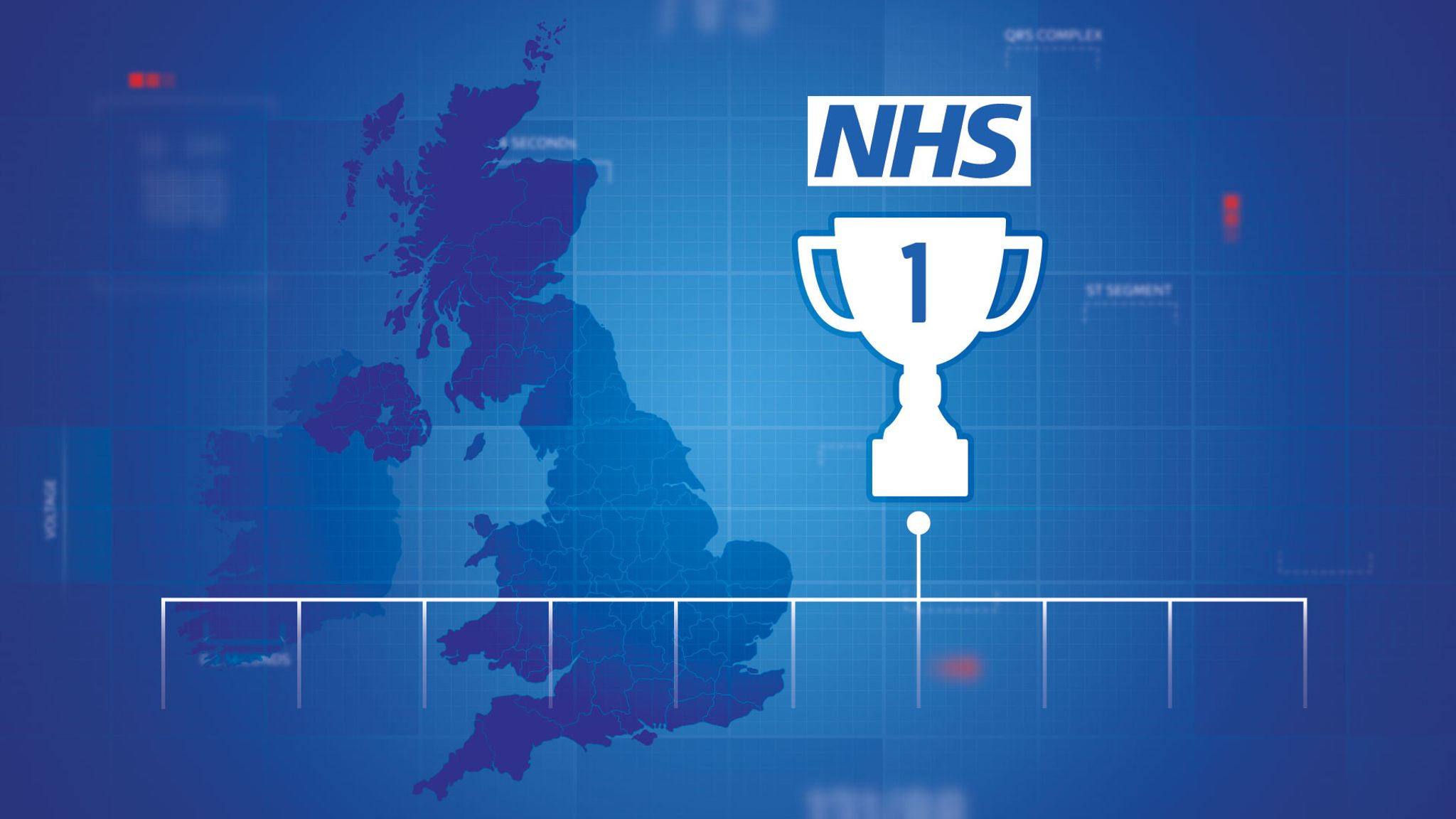The NHS England league tables have just been published for the very first time, and they’re causing quite a stir across the country. Every single NHS trust in England now has an official ranking, from the brilliant to the struggling, and the results are eye-opening.
But here’s what’s really got people buzzing – some hospitals that everyone thought were doing well have ended up much lower than expected, while others have surprised everyone by topping the charts.
The Winners and the Strugglers
When the NHS England league tables dropped today, Moorfields Eye Hospital in London claimed the top spot. That’s probably not a huge shock since they specialise in eye care and have been doing it brilliantly for years. Right behind them came the Royal National Orthopaedic Hospital and The Christie NHS Foundation Trust.
But at the bottom of the NHS England league tables? The Queen Elizabeth Hospital in King’s Lynn, Norfolk. That’s got to sting a bit, especially when you’re named after the Queen.
“We must be honest about the state of the NHS to fix it,” said Health Secretary Wes Streeting. “Patients and taxpayers have to know how their local NHS services are doing compared to the rest of the country.”
The thing is, these NHS England league tables aren’t just about bragging rights. The hospitals at the top get more money and freedom to run things their way, while those at the bottom get extra support – and extra scrutiny.
How They Actually Work Out the Rankings
The NHS England league tables don’t just look at one thing and call it a day. They’re checking everything from how long you wait in A&E to whether the hospital’s books balance at the end of the year.
Each trust gets scored on finances, patient access to care, waiting times for operations, A&E performance, and ambulance response times. It’s like a school report card, but for hospitals, and the results affect real people’s lives.
The NHS England league tables split trusts into four segments. The first segment contains the top-performing hospitals, while the fourth segment is where the most challenged trusts are placed.
The Money Factor Changes Everything

Here’s where the NHS England league tables get really interesting – your hospital’s ranking directly affects how much cash they get to spend. Top performers get rewarded with greater autonomy and the ability to reinvest surplus budgets into shiny new diagnostic equipment and hospital upgrades.
“Top performers will be given greater freedoms and investment,” according to the Department of Health and Social Care. Meanwhile, hospitals in the middle segments are being told to learn from the best performers if they want to see any of that extra funding.
It’s basically the NHS England league tables creating a competitive environment where hospitals have to prove they deserve more resources.
The Specialist Hospital Surprise
Something interesting about the NHS England league tables is that most of the top performers are specialist hospitals. Moorfields does eyes, the Royal National Orthopaedic Hospital does bones and joints, and The Christie specialises in cancer treatment.
This raises questions about whether the NHS England league tables are fair to general hospitals that have to deal with everything from heart attacks to broken arms to mental health crises. A specialist eye hospital has a very different job than a busy A&E department in a major city.
Some experts are worried the NHS England league tables might be comparing apples to oranges, which could make the whole exercise a bit pointless.
The Ambulance Services Get Their Own Table
The NHS England league tables also include separate rankings for ambulance services, and the results there are pretty telling. North West Ambulance Trust topped that list, followed by East Midlands and Yorkshire.
At the bottom? East of England Ambulance Trust, which probably explains why people in that region have been complaining about waiting ages for ambulances.
“These league tables will identify where urgent support is needed,” Streeting explained, and you can bet the East of England service is going to get some serious attention.
The Critics Aren’t Buying It

Not everyone’s thrilled about the NHS England league tables. Some pretty smart people are saying the whole thing oversimplifies how hospitals actually work.
“A single ranking cannot give the public a meaningful understanding of how good or bad a hospital is,” warned Danielle Jefferies from The King’s Fund. “Hospital performance is not as simple as good or bad.”
Her point is that the NHS England league tables hide the fact that a hospital might be brilliant at heart surgery but terrible at mental health services. Or a trust might run multiple hospitals across different sites, with some performing well and others struggling.
What This Means for Patients
The big question is whether the NHS England league tables will actually help patients make better choices about their healthcare. In theory, you could look up your local hospital and see how it stacks up against others.
“Letting patients and the public access more data will help to drive improvement even faster,” said Sir Jim Mackey from NHS England. The idea is that patients will demand better service from poorly performing hospitals.
But here’s the reality – most people don’t get to choose which hospital they go to. In a medical emergency, you’re going to the nearest A&E, not the one that scored highest on the NHS England league tables.
The Location-Based Care Issue
One of the biggest goals of the NHS England league tables is to end what politicians call the geographic inequality in healthcare – the idea that your health outcomes depend on where you live rather than what’s wrong with you.
The problem is that the NHS England league tables might actually make this worse in the short term. If you live near a hospital that’s ranked poorly, you’re stuck with substandard care until they improve – and that could take years.
The government’s betting that the competitive pressure from the NHS England league tables will force improvements faster than the old system of quiet encouragement and gentle nudging.
Performance-Related Pay Changes Everything
Here’s something that might really shake things up – NHS leaders’ pay is now going to be linked to where their trust sits in the NHS England league tables. Perform well, get paid more. Perform badly, and your salary reflects it.
“The best NHS leaders will be offered higher pay to take on the toughest jobs,” according to NHS England. They’re basically trying to create financial incentives for top managers to fix struggling hospitals.
This could work brilliantly or backfire spectacularly. Great leaders might be tempted to move to easier jobs rather than tackle difficult trusts, or they might see the challenge as worth the potential reward.
What Happens Next
The NHS England league tables are going to be updated quarterly, so hospitals can’t just have one good year and coast. They’ll need to consistently perform well to stay near the top.
By summer 2026, the NHS England league tables will expand to cover Integrated Care Boards – the organisations responsible for planning health services in local areas. That means even more accountability and even more rankings.
The big test will be whether the NHS England league tables actually improve patient care or just create a culture of fear and target-chasing. The NHS has a history of gaming systems to hit targets while missing the bigger picture of patient wellbeing.
Only time will tell if the NHS England league tables become a useful tool for improvement or just another layer of bureaucracy that distracts from actually caring for sick people.
For now, patients across England have access to more information about their local hospitals than ever before – whether that information helps them or just confuses them remains to be seen.
